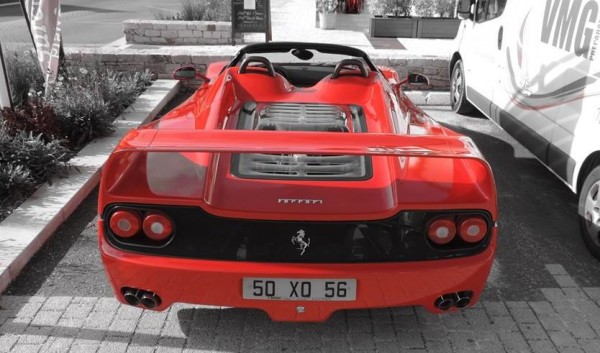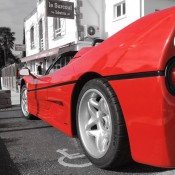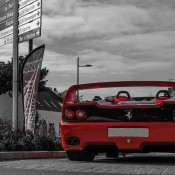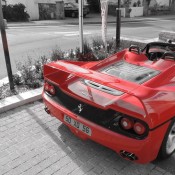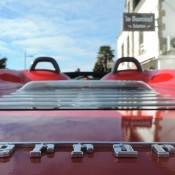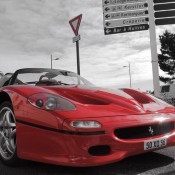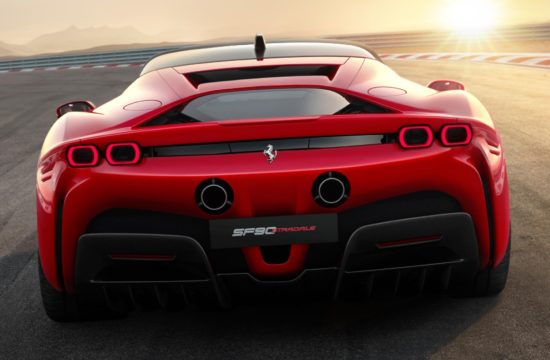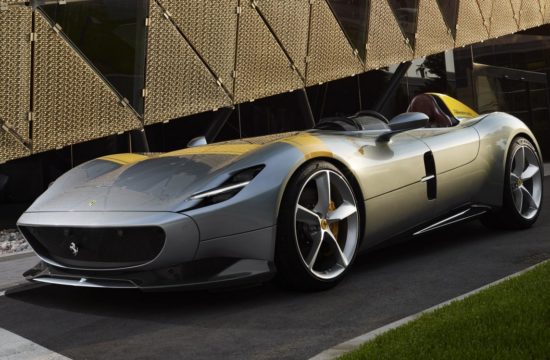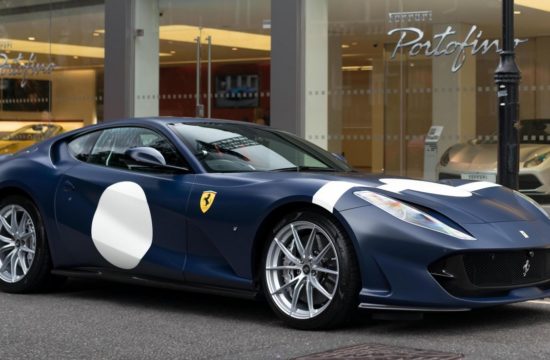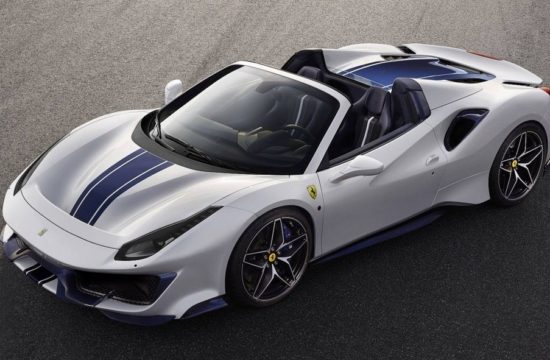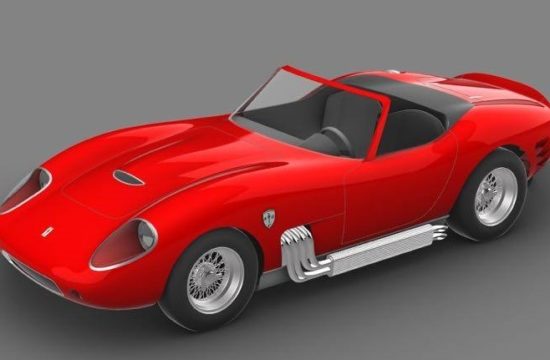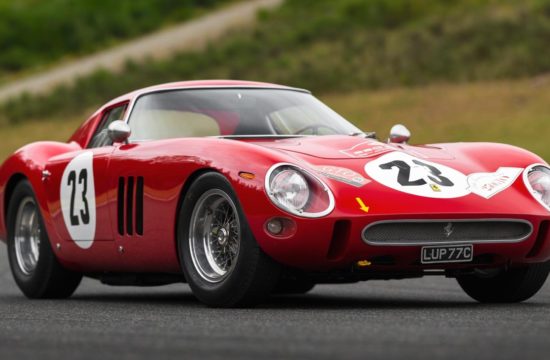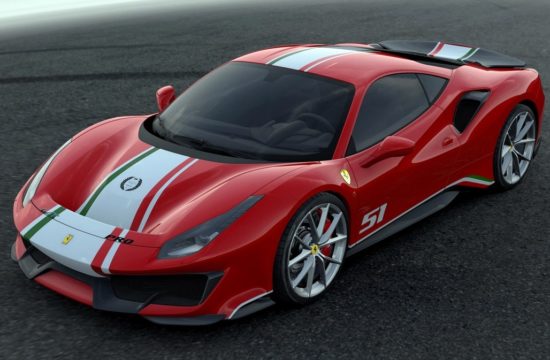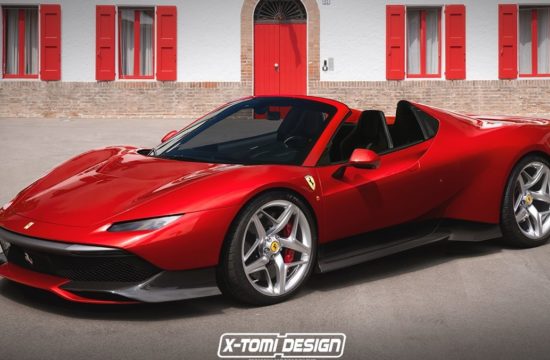Granted, Ferrari F50 is not your typical Rivera posemobil. It is in fact a fairly ugly race car with number plates; a convincing effort in making an F1 car for the road. But answer me this: why does it look so hot parked casually on the side of the road in the French city of La Trinité-sur-Mer?
That may have to do with the juxtaposition of the hard-core, no-nonsense Italian super car and the cute little French restaurant, le Surcouf, it is parked in front of. The imposing presence of the F50 is in total contrast with its warm and welcoming surroundings. We admire the resolve of the guy who prefers to drive an F50 to lunch instead of a modern, comfy GT car!
Photos by Pierre LM photography via Maxpredator911
The Ferrari F50 Technical Highlights:
- Dimensions
- Weight: 2976 lb (1349 kg)
- Distribution: 42%/58% (front/rear)
- Length: 176.4 in (4,481 mm)
- Height: 44.1 in (1,120 mm)
- Width: 78.2 in (1,986 mm)
- Wheelbase: 101.6 in (2,581 mm)
- Front track: 63.8 in (1,621 mm)
- Rear track: 63.1 in (1,603 mm)
- Engine
- Type: Tipo F130, model SFE 4.7 VJGAEA
- Position: Mid-engine, rear-wheel drive
- Configuration: Longitudinal 60-valve 65° V12, derived from F1 unit
- Aspiration: Natural, with Variable Length Intake Manifold via butterfly valve in Intake Manifold
- Engine weight: 436.5 lb
- Displacement: 4698 cc (286.68ci)
- Max Power: 513 bhp (383 kW) @ 8000 rpm
- Max Torque: 347 lb·ft (470 N·m) @ 6500 rpm
- Power/Disp.: 109.1 bhp/litre
- Weight/Power ratio: 5.8 lb/bhp
- Bore x Stroke: 3.35 in. x 2.72 in.
- Compression ratio: 11.3:1
- Redline: 8500 rpm
- ECU: Bosch Motronic 2.7 (controls the fuel feed, ignition timing, and variable length intake and exhaust systems)
- Fuel tank: Foam filled, aeronautical-style Sekur rubber bladder, 27.7 US gal.
- Transmission
- Configuration: Longitudinal 6 Speed Manual + Reverse, Limited slip differential, RWD
- Gear ratios: 2.933:1 (1st), 2.157:1 (2nd), 1.681:1 (3rd), 1.360:1 (4th), 1.107:1 (5th), 0.903:1 (6th), 2.529:1 (Reverse)
- Final drive: 3.70:1
- Clutch: Dry, twin plate
- Cooling: Oil-water intercooler between gearbox lubricant and engine
- Chassis
- Type: Central carbon fiber tub, light-alloy suspension and engine-gearbox assembly mounting points co-polymerised to the chassis
- Materials: Carbon fiber, epoxy resin, Nomex honeycomb core, sandwich construction
- Weight: 2249 lb
- Torsional stiffness: 25,500 lb·ft (34,570 N·m) per degree
- Suspension
- Front: F1-derived, rose-jointed unequal-length wishbones, push-rods, coil springs, Bilstein gas-pressurised monotube dampers, electronic adaptive damping, electronic height adjustment (40 mm max)
- Rear: F1-derived, rose-jointed unequal-length wishbones, push-rods, coil springs, Bilstein gas-pressurised monotube dampers, electronic adaptive damping, mounting points on a spacer between the engine and gearbox
- Travel: 55 mm bump, 60 mm rebound
- Camber angle: -0.7 degrees front, -1.0 degrees rear
- Anti-roll bars: Front and rear
- Max roll angle: 1.5 degrees
- Electronic Adaptive Damping (Based on steering wheel angle and velocity, the body’s vertical and longitudinal acceleration, brake line pressure, and vehicle speed.)
- Maximum reaction time (from minimum to maximum damping force or vice versa): 140 milliseconds (0.14 sec).
- Average reaction time (from minimum to maximum damping force or vice versa): 25 to 30 milliseconds (.025 to .03 sec)

